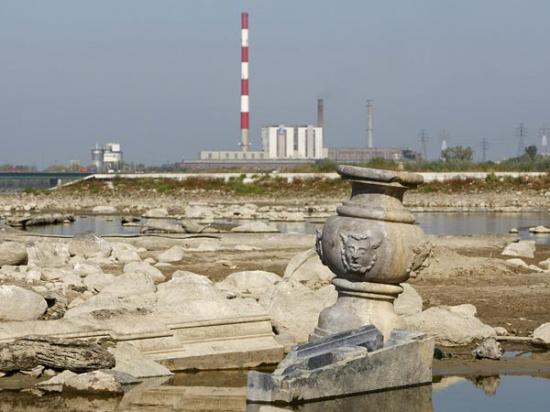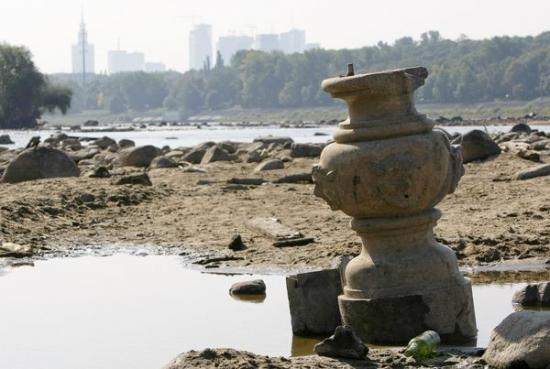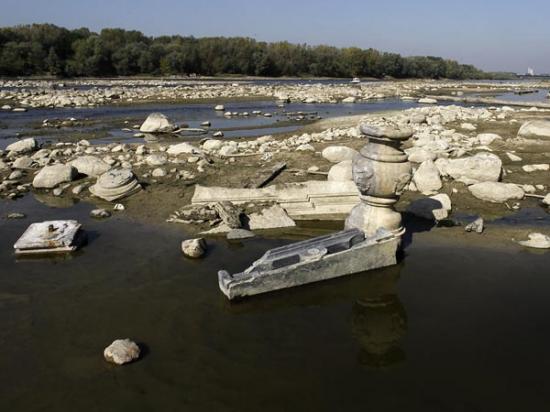Brian Handwerk
Source - http://news.nationalgeographic.com/news/2012/09/pictures/120926-polish-river-warsaw-marble-treasure-science-drought/?utm_source=feedburner&utm_medium=feed&utm_campaign=Feed%3A+ng%2FNews%2FNews_Main+%28National+Geographic+News+-+Main%29
Many Faces of Power

Photograph by Kacper Pempel, Reuters
As drought depleted Poland's Vistula River (map), tons of looted 17th-century marble artifacts—including this stonework pictured against a power plant—surfaced this month. The revelation helps solve a centuries-old mystery and crowns one archaeologist's three-year quest for Warsaw's lost royal treasures.
The sculpted fountains, columns, and other marbles on the muddy bottom of the Vistula—now at its lowest level since record keeping began in the late 1700s—once decorated Warsaw's Royal Castle, Kazimierz Palace, and other haunts of Polish nobility. Stolen during the a multiyear conflict known as the Swedish Deluge, the treasures were lost when a getaway barge sank while setting out forSweden.
"So far we have found more than 12 tons of original, 17th-century marbles," saidHubert Kowalski, the University of Warsaw archaeologist leading the search. "They are in very good shape, considering 350 years in the river."
Shown on September 9 in central Warsaw, the Vistula River had hidden its contraband marble since the mid-1600s, when a shipwreck sent tons of stolen royal marbles to the bottom.
References to the lost loot appeared in 17th-century letters, Kowalski, the archaeologist said. His own search started in 2009, when he began studying 1906 documents depicting marble finds in the river-pictures, newspaper articles, and other accounts.
"Workers trying to dig sand out of the river found marbles, which I think were from exactly the same boat," he explained. "All the things they found were within a one-square-kilometer (0.4-square-mile) triangular area, which in the beginning of the 20th century was defined by three small towns. Now it's all in Warsaw."
Low Water, High Culture
 Photograph by Kacper Pempel, Reuters
Photograph by Kacper Pempel, Reuters
Punctuating the sunken Vistula, an early 17th-century fountain peers back at modern Warsaw on September 18. It didn't take a drought to reveal the river's cache to Kowalski's team—but it did make their job a lot easier.
An arduous underwater search in November 2011 had already turned up some six tons of marbles via sonar and other technology, as well as long hours of scuba diving. This summer's sinking waters allowed the researchers to double their discoveries—now totaling 12 tons—in no time flat.
Finding the treasure, though, is only half the work, but again, the drought helps. "Many of these weigh 600 or 700 kilograms [1,320 or 1,500 pounds], so we used a police helicopter to move some a couple of days ago," Kowalski said.
Precious Cargo

Photograph by Kacper Pempel, Reuters
"When anyone finds 12 tons of marble in a river, it's a huge find," said Kowalski, deputy director of the Museum of the University of Warsaw. But, he added, the finds resonate especially strongly for Varsovians, whose city was leveled in World War II.
"We don't know much about the royal residences from the 17th century," Kowalski said. The discovery should be a boon "for historians and art historians, for conservators—for everybody."